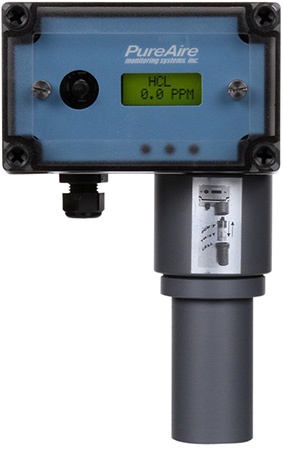Recycling and Reusing Wastewater
- By : PureAire Monitoring Systems
- Posted on : September 25, 2019
- News Room
When one hears the word “recycling”, does wastewater typically come to mind? Probably not. Most of us think about recycling paper products, plastic bags, aluminum foil, and water bottles. But what happens to the wastewater we create when we bathe, wash the dishes, do laundry, and flush the toilet? According to the International Water Association, around 80% of all wastewater is discharged into the world’s waterways, where it creates health, and environmental hazards. The wastewater supply is rising rapidly, while access to clean water is dwindling. In the past several years, a few countries, including Singapore, Australia, and Namibia and, in the United States, states including California, Virginia, and New Mexico have begun recycling wastewater into safe drinking water. Science and technology are making wastewater clean and safe enough to drink straight out of the faucet.
TOILET WATER TO TAP
Recycled wastewater usage is not new. In fact, for many years, it has been used in agriculture, landscaping, as cooling water for power plants and oil refineries, in paper processing, and to flush toilets, among other uses. However, drinking recycled wastewater is not as common, and for good reason, as most people find unappetizing the thought of drinking water that was once in a toilet.How the recycled water is to be used determines how pure the water needs to be and, therefore dictates the scope of required treatment.
Wastewater, or sewage, must go through several stages before it is pure enough for human consumption. Once the water has gone through appropriate separation and filtration processes, it is about as clear and clean as is necessary for most applications. However, it is not safe for drinking, as there may still be bacteria and viruses present. To ensure those are destroyed, the water must be disinfected. Some of the most common disinfectant methods use the following (or some combination of the following):chlorine gas, chlorine dioxide, bleach, carbon dioxide, ozone, UV light, and pasteurization. In the United States, chlorine gas, carbon dioxide, and hypochlorite (bleach) are the most commonly used methods for disinfecting wastewater for use as drinking water.
MONITORING REDUCES EXPOSURE RISKS
The use of disinfecting gases and chemicals such as chlorine, chlorine dioxide, carbon dioxide, and ozone, is not without risks.Chlorine, chlorine dioxide and ozone can be explosive when exposed to other reactive gases, such as ammonia. Although ammonia is not used to disinfect wastewater, it is present in the wastewater itself. High levels of chlorine, chlorine dioxide, ozone, and ammonia can cause respiratory distress and, in some cases, death, if the levels are over the permissible exposure levels established by the Occupational Safety and Health Administration and/or the National Institute of Occupational Health and Safety.Because of the risk of gas leaks, improper control or ventilation, safe practices dictate proper ventilation and the use of gas detecting monitors to alert employees to unsafe levels of toxic gas.
PUREAIRE MONITORS
PureAire Monitoring System’s universal gas detectors use “smart” sensor cell technology to continuously track levels of ammonia, chlorine, ozone, and other toxic gases. The sensor cell is programmed to monitor for a specific gas and measurement range, as required by the user. Wastewater treatment facilities using a PureAire universal gas detector can detect elevated toxic gas levels before the health of wastewater treatment facility employees is put at risk. For instance, in the event of a chlorine gas leak, and the elevation of chlorine to an unsafe level, the gas detector will set off an alarm that includes horns and flashing lights, and turn on the ventilation system, alerting treatment facility staff to evacuate the area.An easy to read screen makes it simple for facility employees to monitor toxic gas levels at a glance, giving them peace of mind.



